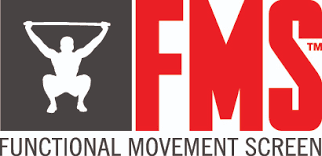While Osgood Schlatter’s Disease is not something we see all the time in our Burlington office, it does come up from time to time when we are dealing with our youth athletes. Osgood Schlatter’s Disease is what we can an avulsion fracture, and sometimes chiropractic care can help!
Osgood Schlatter’s Disease in Youth Sports Video
Key Takeaways:
- Most commonly seen in youth sports with a lot of overuse of the leg muscles (ie – running)
- Osgood Schlatter’s Disease is an avulsion fracture of the tibial tuberosity
- It’s an overuse injury
- If it’s in the early stages it will heal on its own
- Chiropractic care at our Burlington office can address the cause and help with some of the pain
You don’t have to live with Osgood Schlatter-related pain
If you, or your child, is struggling with knee pain related to their sport – you don’t have to suffer through the pain. We can help! Call our office at 336-270-3050 or use the link below to schedule.
Osgood Schlatter’s Disease in Youth Sports Video Transcript
DISCLAIMER: This is a direct transcript of the video audio and may not be grammatically correct.
This disease is not something that is seen a ton in the office but it does come up since we treat youth athletes. Typically this condition is seen more in the male age groups of 10 to 15 years old. The sports that it is most seen in are Cross-Country, soccer, basketball, football, track and field, and any other sports with running or jumping.
What is Osgood Schlatters?
Basically, this condition is when there is an avulsion fracture on the front part of the tibia. An avulsion fracture is when a tendon or ligament pulls a small part of the bone from the main section of the bone. This type of fracture will happen on what is called the tibial tuberosity which is just a little bump on the front of your shin bone. You can feel this small bump if you feel right below your knee cap, that is your tibial tuberosity. This is the location where this condition is seen and the sport where there is the most pain. When Osgood Schlatters goes untreated, the tibial tuberosity will actually start to get pulled off the rest of the tibia.
Why does Osgood Schlatters happen?
Since this condition occurs more in the athletic population, it is usually classified as an overuse injury. The muscles that are being overused are the quad muscles which are the big muscles on the front part of your thigh. The issue is these muscles actually come together towards your knee cap and become more narrow and go around your patella or kneecap and form a tendon. That tendon will then attach to the tibial tuberosity. When the quad muscles are used repetitively and not given time to rest, that is a lot of power and force being driven into that tendon constantly. What happens is all that force is then pulling on the bump called the tibial tuberosity. These muscles will then continue to pull until part of that bone can’t take the pressure anymore and starts to break away from the rest of the tibia.
What do we do for this condition?
The good news is that if you are in the early stages you will have some swelling right over the tibial tuberosity. This early stage typically heals on its own. As a sports chiropractor, we want to address the pain that this condition is causing but also why this condition has happened which we know is an overuse of the quad muscles. Typically the reason for the quads to be overworked is due to a muscle imbalance. What this means is that there are muscles that may be stronger than their counterparts and are causing instability.
Instabilities can come from the core, the general muscles around the knee, or the muscles that make up the hip. Usually, in this condition, it is much more common than we have instability through the core or through some muscles in the leg. So, to help resolve the pain and reason for this condition we will work on these muscle imbalances.
In order to heal from Osgood Schlatters, the athlete often needs to take a step back and give their body some rest. This will allow the body to start repairing the damaged area of the tibial tuberosity. While this is healing we will start by working on good core control and establishing good core stability. Since this is an overall stability issue, we will also start working out the imbalances of the muscles in the leg, hip, and even low back. This will allow us to make sure everything in the lower half of the body is functioning at its highest potential for the athlete.
Not only will this condition heal and make you less likely to injure yourself but as an athlete, your performance may also increase. Due to having more stability in your body, your muscles will be relaxed and ready to perform at their highest level. This can mean you are able to generate more power or even have more endurance through these muscles.
I hope you don’t have Osgood Schlatter but if you do, don’t worry it does heal with some time. While it is healing there are plenty of things that you can do about it in the meantime so that you can come out on the other end of this condition in a much better place.
If you have any questions, you can always send them to us. Always remember to live with passion and not pain.


